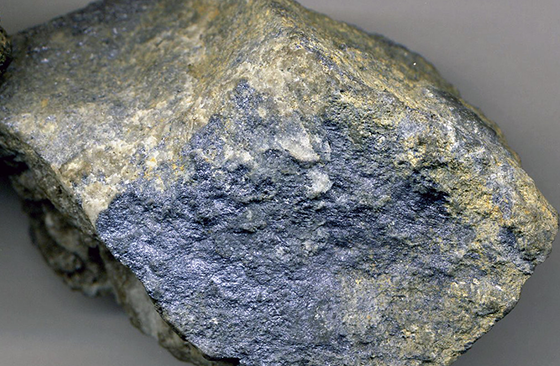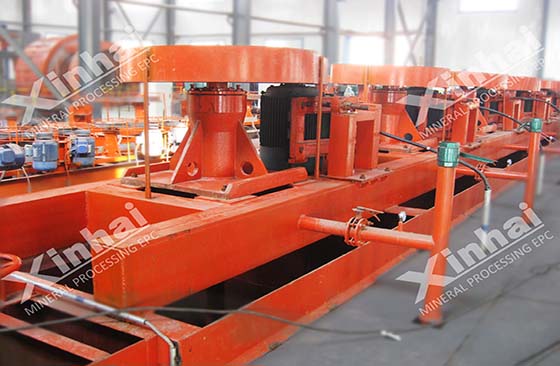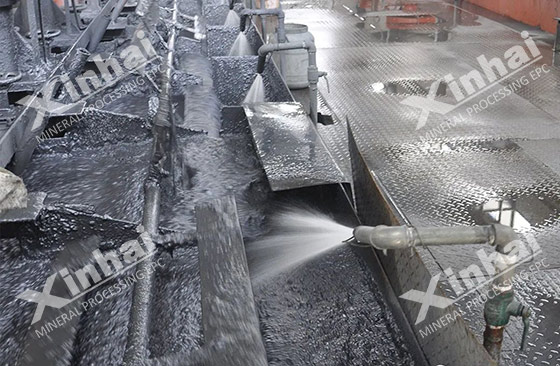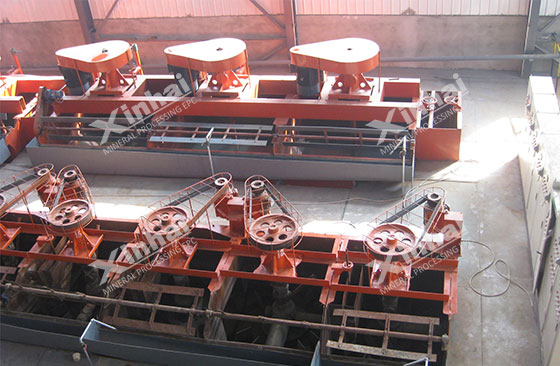
Metallic molybdenum is widely used in the steel industry, electronic components, aerospace, chemical industry and other industrial and technological fields because of its excellent properties such as high temperature resistance, corrosion resistance, good electrical conductivity and thermal conductivity. Molybdenum mineral resources are the main source of metallic molybdenum, and its development and utilization level is directly related to the development of related industries and technological progress. With the continuous development of these industrial sectors, the market demand for metallic molybdenum is increasing, and the reserves of molybdenite resources are also decreasing year by year. It is imperative to develop and utilize other molybdenum ore resources. Choosing appropriate and efficient molybdenum ore dressing technology is the main way to develop and utilize molybdenum mineral resources. The following will introduce you to the dressing methods of single molybdenite and molybdenum-containing polymetallic ores to help you further understand molybdenum ore dressing.

Common types of molybdenum ores include: single molybdenite, molybdenum-containing polymetallic ores and high oxidation rate molybdenum ores. Among these ores, talc-type molybdenum ores, talc-type copper-molybdenum ores, and molybdenum ores with finer impregnation particles are all difficult-to-select ores. The grade of these difficult-to-select molybdenum ores is higher than that of industrial molybdenum ores, and they are accompanied by valuable metals such as lead, gold, and silver, and have certain development and utilization value. However, it is difficult to improve the utilization rate of these ores by using traditional flotation methods, the concentrate grade is low, and the product quality is low. Therefore, it is necessary to select appropriate molybdenum mineral processing methods according to the specific type of ore to improve the utilization rate of minerals.
Different types of molybdenum mineral dressing methods

This molybdenite dressing method generally adopts the process of coarse grinding and rough selection-regrinding and reselection. When molybdenite is flotated, non-polar oils need to be added to the pulp as collectors, and frothers need to be added to improve the flotation efficiency. Adding a small amount of butyl xanthate, pentyl xanthate, dodecyl mercaptan or butyl ammonia black medicine to the pulp and mixing it with kerosene can improve the flotation index of molybdenite. Adding hydrocarbon emulsifiers to the pulp can enhance the coarse grinding and rough selection effect in the molybdenite flotation process, and adding hydrocarbon oil and sulfhydryl collectors can improve the flotation effect of molybdenite.
(1) Beneficiation methods for copper-molybdenum polymetallic ores

Copper-molybdenum ores are somewhat difficult to beneficiate, mainly because the original ore has a low grade and fine embedded particle size. Generally, beneficiation plants will choose to use two methods, preferential flotation and mixed flotation, to treat this type of ore.
Preferential flotation method: This method can treat molybdenum ores that do not contain copper or contain a small amount of copper and lead sulfide ores (such as single molybdenum ore, tungsten-molybdenum ore, and iron-molybdenum ore), and can recover native molybdenum.
Mixed flotation method: This method is used to treat molybdenum ores containing copper or lead sulfide minerals (such as copper-molybdenum ore and lead-molybdenum ore), which is exactly the opposite of preferential flotation. During mixed flotation, yellow medicine collectors and hydrocarbon oil reagents are used to select the mixed concentrate of copper-molybdenum ore, and then the mixed concentrate is separated.
(2) Ore dressing methods for other molybdenum-containing polymetallic ores

Quartz vein gold, molybdenum, lead and sulfur polymetallic ores: Preferentially float out mixed coarse concentrate, then use cyanide leaching to recover gold, separate molybdenum from tailings, and finally obtain molybdenum concentrate. The flotation tailings need to be separated from lead and sulfur ores to recover lead concentrate and sulfur concentrate.
Low-grade tungsten, molybdenum and bismuth ores: Mix and float out molybdenum and bismuth coarse concentrate, then perform molybdenum-bismuth-sulfur separation and molybdenum-bismuth separation.
The floatability of talc in the ore is similar to that of molybdenite, and it can be called "iso-floatable mineral" with molybdenite. When processing mixed ores of these two minerals, it is difficult to achieve with existing beneficiation technology. Talc has the characteristics of easy crushing and mudification, and needs to be desludging before molybdenum ore flotation. This is currently one of the effective ways to solve the mudification of talc and improve the beneficiation efficiency of this ore.

Nickel-molybdenum ore is a complex multi-metallic mineral resource. In addition to the valuable metals Ni and Mo, the ore also contains a large amount of platinum group metals, rare earth metals and graphite. Since the mineral coexists with pyrite, the traditional beneficiation method cannot effectively separate nickel and molybdenum mineral, so a combined process is required. At present, common beneficiation methods include roasting-leaching method, high-temperature oxygen pressure leaching method, normal temperature wet leaching method, etc. These methods are mainly used to process molybdenum ores with a grade of more than 2%.

The above is a brief introduction to molybdenum mineral types and beneficiation methods. The low technical and economic indicators of difficult-to-select molybdenum ore recovery restrict the development and utilization of molybdenum ore resources. Conducting beneficiation tests and analysis on difficult-to-select molybdenum ores, formulating appropriate beneficiation plans and beneficiation equipment, and thus improving the utilization rate of molybdenum mineral resources.
To find out more about our products and solutions, please fill out the form below and one of our experts will get back to you shortly.